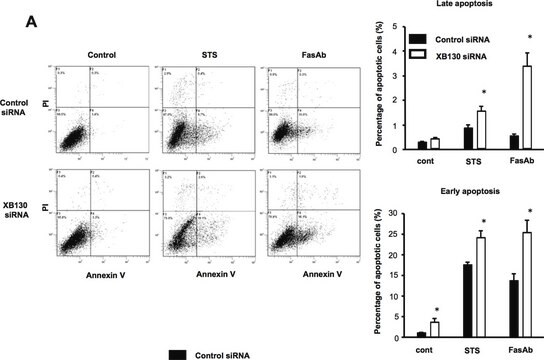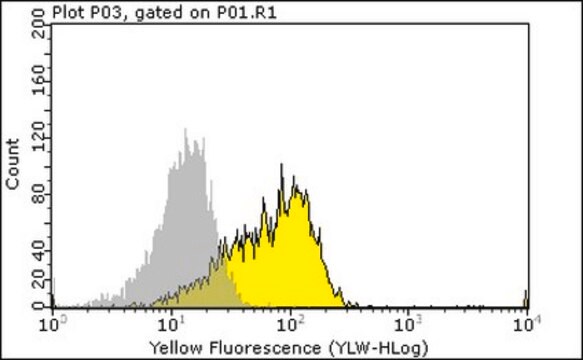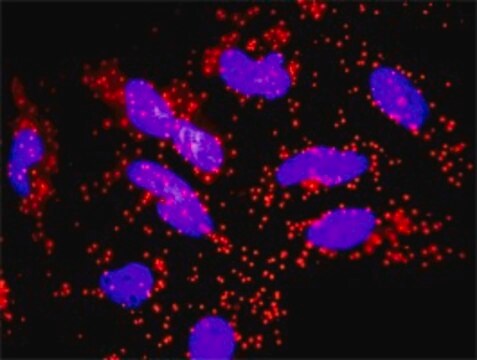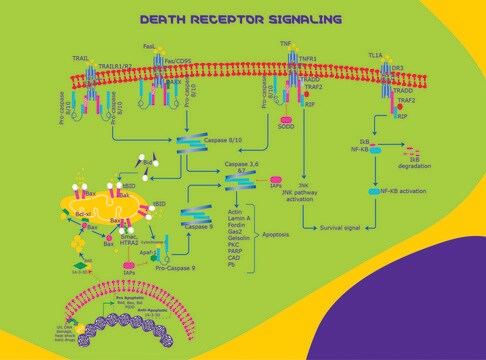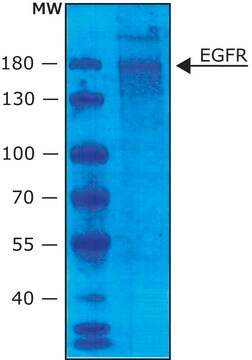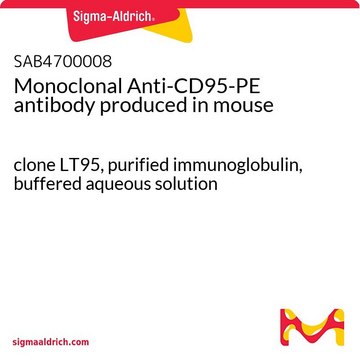F4424
Anti-Fas Antibody
mouse monoclonal, DX2
Synonyme(s) :
Monoclonal Anti-Fas (CD95/Apo-1) antibody produced in mouse, Anti-Apo-1, Anti-CD95
About This Item
Produits recommandés
Nom du produit
Monoclonal Anti-Fas, clone DX2, purified from hybridoma cell culture
Source biologique
mouse
Conjugué
unconjugated
Forme d'anticorps
purified from hybridoma cell culture
Type de produit anticorps
primary antibodies
Clone
DX2, monoclonal
Description
fluorescence intensity and maximum percentage positive similar to that obtained with saturating antibody levels
Forme
buffered aqueous solution
Utilisation
10 μL sufficient for 1 × 106 cells
Espèces réactives
human
Technique(s)
flow cytometry: 4-20 μg/mL using cultured human Burkitt’s lymphoma Raji cells
microarray: suitable
Isotype
IgG1
Numéro d'accès UniProt
Conditions d'expédition
dry ice
Température de stockage
−20°C
Modification post-traductionnelle de la cible
unmodified
Informations sur le gène
human ... FAS(355)
Description générale
Spécificité
Immunogène
Application
Western Blotting (1 paper)
- immunoblotting
- flow cytometry
- the induction of apoptosis
Actions biochimiques/physiologiques
Forme physique
Clause de non-responsabilité
Vous ne trouvez pas le bon produit ?
Essayez notre Outil de sélection de produits.
Code de la classe de stockage
10 - Combustible liquids
Classe de danger pour l'eau (WGK)
WGK 3
Point d'éclair (°F)
Not applicable
Point d'éclair (°C)
Not applicable
Équipement de protection individuelle
Eyeshields, Gloves, multi-purpose combination respirator cartridge (US)
Faites votre choix parmi les versions les plus récentes :
Certificats d'analyse (COA)
Vous ne trouvez pas la bonne version ?
Si vous avez besoin d'une version particulière, vous pouvez rechercher un certificat spécifique par le numéro de lot.
Déjà en possession de ce produit ?
Retrouvez la documentation relative aux produits que vous avez récemment achetés dans la Bibliothèque de documents.
Articles
Quantitative and qualitative western blotting to validate knockdown by esiRNA. Sigma-Aldrich.com
Notre équipe de scientifiques dispose d'une expérience dans tous les secteurs de la recherche, notamment en sciences de la vie, science des matériaux, synthèse chimique, chromatographie, analyse et dans de nombreux autres domaines..
Contacter notre Service technique